Chemical Materials Innovations: Advancing Electronics Manufacturing and Sustainability
- Addtime: 2025-04-08 / View: 576
The electronics industry is a cornerstone of modern technology, driving advancements in computing, communication, and renewable energy. However, its rapid growth has also raised concerns about environmental impact, resource efficiency, and waste management. Recent breakthroughs in chemical materials are addressing these challenges, offering sustainable solutions without compromising performance. This article explores how innovative chemical materials are transforming electronics manufacturing, from flexible circuits to eco-friendly cleaning agents.
● Flexible Electronics: The Rise of Conductive Polymers
Flexible electronics are revolutionizing wearable devices, IoT sensors, and foldable displays. Central to this innovation are conductive polymers, such as poly(3,4-ethylenedioxythiophene) polystyrene sulfonate (PEDOT:PSS), which combine electrical conductivity with mechanical flexibility. These materials are replacing traditional rigid substrates like silicon, enabling lightweight, bendable devices.
Applications:
- Wearable Health Sensors: Companies like FlexEnable are using PEDOT:PSS to create flexible, skin-like sensors that monitor vital signs.
- Foldable Displays: Samsung and LG are integrating conductive polymers into OLED screens, allowing for foldable smartphones and TVs.
● 3D Printing in Electronics: Precision and Efficiency
3D printing is transforming electronics manufacturing by enabling rapid prototyping and on-demand production. Conductive inks and photoresins are key materials driving this shift:
1. Conductive Inks: Silver, copper, and graphene-based inks are used to print circuit boards and antennas directly onto substrates. These inks reduce material waste and energy consumption compared to traditional etching methods.
2. Photoresins: UV-curable resins are used in stereolithography (SLA) to create complex electronic components, such as microfluidic devices and sensors.
3. Case Study: Xerox PARC has developed liquid metal inks that solidify at room temperature, enabling the printing of high-performance circuits for IoT devices.
● Thermal Management Materials: Cooling the Future
As electronics become more powerful, heat dissipation is critical. Graphene-based composites and phase-change materials (PCMs) are addressing this challenge:
- Graphene Composites: Graphene’s exceptional thermal conductivity makes it ideal for heat sinks and thermal interface materials. Companies like Grafysa are producing graphene-aluminum composites for EV batteries and data centers.
- PCMs: Materials like paraffin wax and fatty acids absorb and release heat during phase transitions, stabilizing temperatures in laptops and servers.
● Eco-Friendly Cleaning Agents: Reducing Toxic Waste
Traditional cleaning agents in electronics manufacturing, such as chlorofluorocarbons (CFCs), are being phased out due to environmental harm. Bio-based solvents and supercritical CO₂ cleaning are emerging as sustainable alternatives:
1. Bio-Based Solvents: Derived from citrus peels and corn, these solvents effectively remove flux residues and contaminants without harming the ozone layer.
2. Supercritical CO₂ Cleaning: Using pressurized CO₂ as a solvent, this method eliminates hazardous waste and reduces water usage.
● Circular Economy in Electronics: Recycling and Recovery
The electronics industry generates 50 million tons of e-waste annually, with only 20% recycled. Chemical recycling offers a solution:
- Solvent Extraction: Rare metals like indium and gallium are recovered from waste using selective solvents.
- Bioleaching: Microorganisms are used to extract metals from circuit boards, reducing reliance on mining.
● Case Study: TSMC’s Sustainable Manufacturing
Taiwan Semiconductor Manufacturing Company (TSMC) is pioneering sustainable practices in chip production. By implementing water recycling systems and low-carbon photoresists, the company has reduced water usage by 30% and carbon emissions by 25%.
● Future Outlook: Smart Materials and AI-Driven Innovation
The integration of AI and machine learning is accelerating the discovery of new materials. Platforms like Materials Project are using computational models to predict the properties of novel compounds, such as 2D materials (e.g., molybdenum disulfide) for ultra-thin transistors.
● Conclusion
The electronics industry is at a crossroads, balancing innovation with sustainability. From conductive polymers and 3D printing to thermal management and eco-friendly cleaning agents, chemical materials are paving the way for a greener future. As global demand for sustainable technologies grows, the industry must embrace these innovations to reduce environmental impact while driving technological progress. The future of electronics is not just smarter—it’s greener.






